The Polish culture has spread around the world not only in the cinematic format, due to the Polish productions winning multiple awards at international film festivals, but also owing to a strong presence of the artists on the global art scene – painters, photographers, sculptors and performers.
Our selection of the top 10 art events of 2018 includes most notable exhibitions, publications and artists who’ve made a name for themselves in the past year. The following list is divided into two sections:first one, top 5 masters of modernism who’ve risen from obscurity, depths of art history and general public interest as a result of combined efforts of institutions, book publishers and private galleries; second one top 5 contemporary artists who were gaining more and more recognition by winning prestigious contests and participating in the art shows held by some of the most prominent art centres in the world.
The classics: world tour of the Polish neo avant-garde
1. Kobro and Strzemiński in Paris
Without a shadow of a doubt, this year’s crown achievement of the Polish avant-garde must be no other art event than Katarzyna Kobro and Władysław Strzemiński’s monographic exhibit on the entire 4th floor of Centre Pompidou in Paris. As we’ve mentioned before, the Adam Mickiewicz Institute and Muzeum Sztuki in Łódź joined forces in order to make the artists’ dream come true. Over a century later, this pair of iconoclasts did go on the European tour. The Paris exhibit featuring around 180 objects and works of art had travelled previously to Moderna Museet in Malmö, Sweden, as well as Museo Nacional Centro de Arte Reina Sofía in Madrid, Spain (2017). These retrospectives made weaves in the art world. Consequently, Kobro and Strzemiński seem to have followed in the footsteps of Andrzej Wróblewski or Alina Szapocznikow and reclaimed their rightful place in the art history.

J. Przybos, W. Strzeminski, K. Kobro, vers 1930, courtesy of Muzeum Sztuki in Łódź (detail)
2. First books devoted to the Polish artists published by SKIRA
Founded in the 1920s in Lausanne, Skira still remains one of the most prestigious publishing houses in the world. The Italian publisher is associated with the very first illustrated volumes on Pablo Picasso and Henri Matisse. Nowadays, Skira continuous to publish catalogues to the most spectacular art exhibits amounting to fifty publications a year. It’s considered a great honour to have your works featured in one of Skira’s catalogues. In 2018, two of the Polish artists earned this particular distinction. Earlier this year, Skira published the first international publication dedicated to Wojciech Fangor, whose painting was sold recently for a smashing price of 4,00 million zloty at DESA auction. The book provides a comprehensive account of Fangor’s art practice: from his early works in line with the aesthetics of socialist realism, to his unique instantly recognisable op-art compositions. Another avant-garde artist from Poland recognised by Skira is Henryk Stażewski. The book containing over two hundred reproductions of his works chronicles the evolution of his art, contribution to the constructivism as well as the new type of geometric abstraction and conceptualism, which emerged in the post-war Poland. Rumour has it that another Polish artist’s catalogue is in the pipeline. Presumably, a thick volume will be published by Skira in 2019.
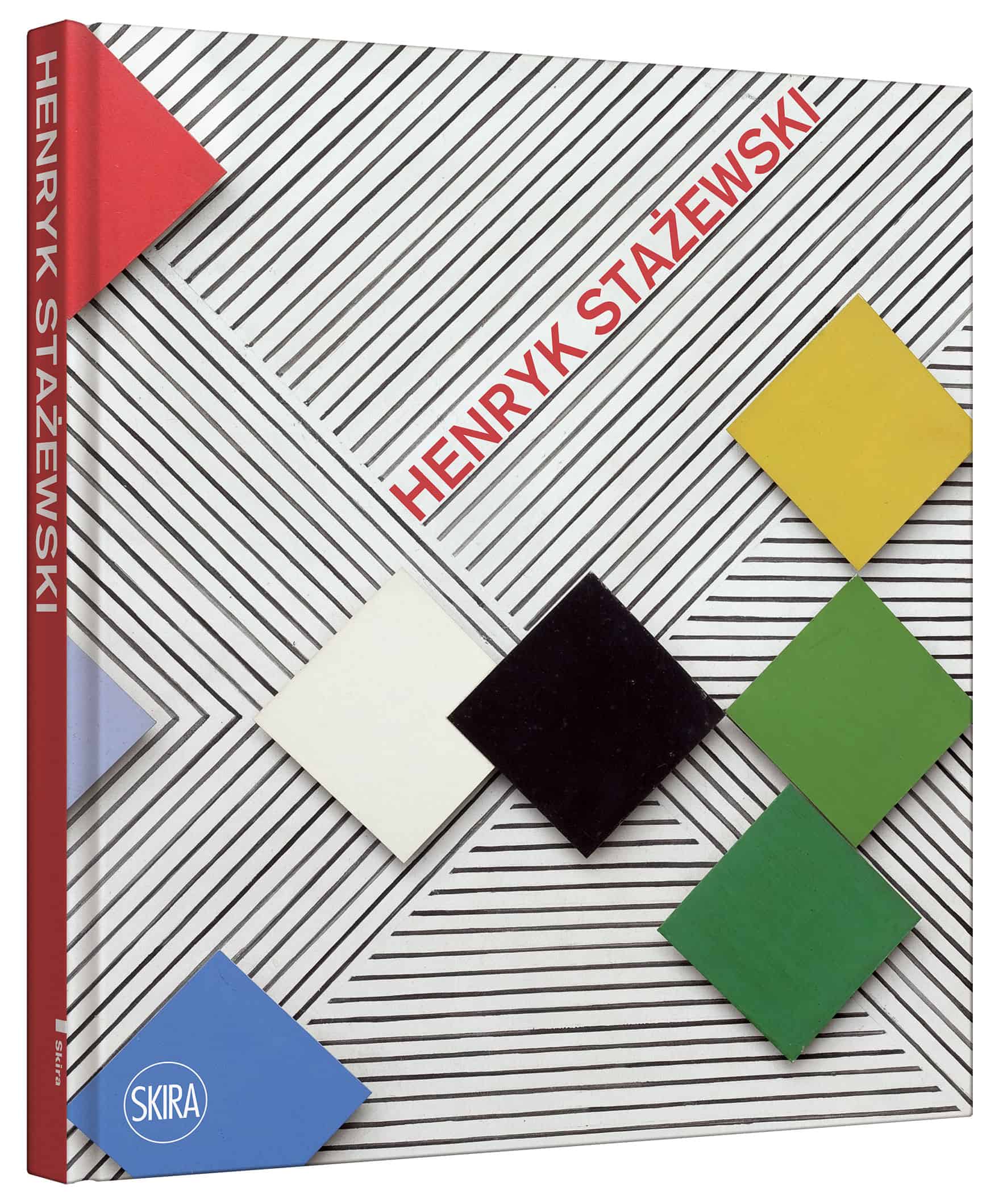
Henryk Stażewski, published by SKIRA Editore, 2018, cover of the book, courtesy SKIRA and Starmach Gallery
3. Zbigniew Dłubak in the Henri Cartier-Bresson Foundation
One of the most prestigious institutions of culture, Paris-based Henri Cartier-Bresson Foundation was named after one of the most outstanding documentary photographers in history. Its mission is to exhibit works of other talented photographers. In January, the venue hosted Zbigniew Dłubak’s solo show in collaboration with the Archeology of Photography Foundation. A detailed retrospective of the artist, which covered three entire floors, showcased Dłubak’s initial experiments with abstract photography deriving from constructivism and surrealism. A particular emphasis was placed on two series, namely “Tautologies” (1971), which juxtaposed real objects with their photographic representation, and “Gestures” (1950-1978) which portrayed Dłubak’s own system of signs and gestures that referenced then current state of semantics and conceptualism. The exhibition in the Cartier-Bresson Foundation situates Dłubak among the most prominent figures of the avant-garde and post-war experimental photography.

Exhibition view Zbigniew Dłubak – Héritier des avant-gardes in Foundation Cartier-Bresson in Paris, courtesy of the Foundation Cartier-Bresson
4. Polish sculpture on the rise
After years of being consigned to oblivion, female sculptors from Poland are ready to shake things up on the global and national art scene. Szapocznikow, Abakanowicz, Kobro, Więcek, Czełkowska ushered in a profound shift in the sculptural paradigm. Those key artistic figures used unconventional materials to create installations, site-specific works and intimate sublime sculptures that flew in the face of the solemn majestic appearance of a geometric form. In 2017, a seminal retrospective of Wanda Czełkowska’s works opened in the Xawery Dunikowski Museum of Sculpture. This solo show reacquainted the modern audience with her art practice and spawned another celebration of the artist in London. Czełkowska’s pieces, included in the “Land of Lads, Land of Lashes” (curator: Anke Kempkes) in the Galerie Thaddaeus Ropac, were placed alongside other female pioneers of minimalist and post-minimalist aesthetic from the 1960s and 1970s, such as Lydia Okumura and Rosemarie Castoro. In spite of a disappointing outcome and deeply flawed exhibition arrangement, it is the context and high reputation of an art gallery that have contributed greatly to the promotion of Polish art abroad.

Exhibition view Land of Lads, Land of Lashes, lower corridor, photo Tom Carter, courtesy of Galerie Thaddaeus Ropac
5. Magdalena Abakanowicz on her way to Tate Modern
The announcement of Magdalena Abakanowicz’s grand retrospective at Tate Modern generated a flurry of excitement in the art word. Scheduled for 2020, the solo show would honour Abakanowicz’s legacy regardless of the multiple pieces of hers placed currently on a permanent exhibit in the cult London museum. Meanwhile, her sculptures are displayed on a number of art shows all around the world. In 2018, the Central Museum of Textiles in Łódź opened Abakanowicz’s second solo show entitled “Metamorphism” dedicated to her artistic oeuvre post-Biennale in Lausanne, which earned her international recognition. The pieces she made in the years 1971-2009 were unveiled on her monographic exhibit “Embodied forms” held in the Marlborough Gallery in New York. Due to the support of the European ArtEast Foundation, Abakanowicz’s sculptural installation entitled “Bambini” was presented in the Castello di Brolio in Gaiole in Chianti, Italy. The piece consists of eighty-three highly symbolic figures of headless children. All the achievements mentioned above precipitate her upcoming majestic retrospective at Tate Modern.
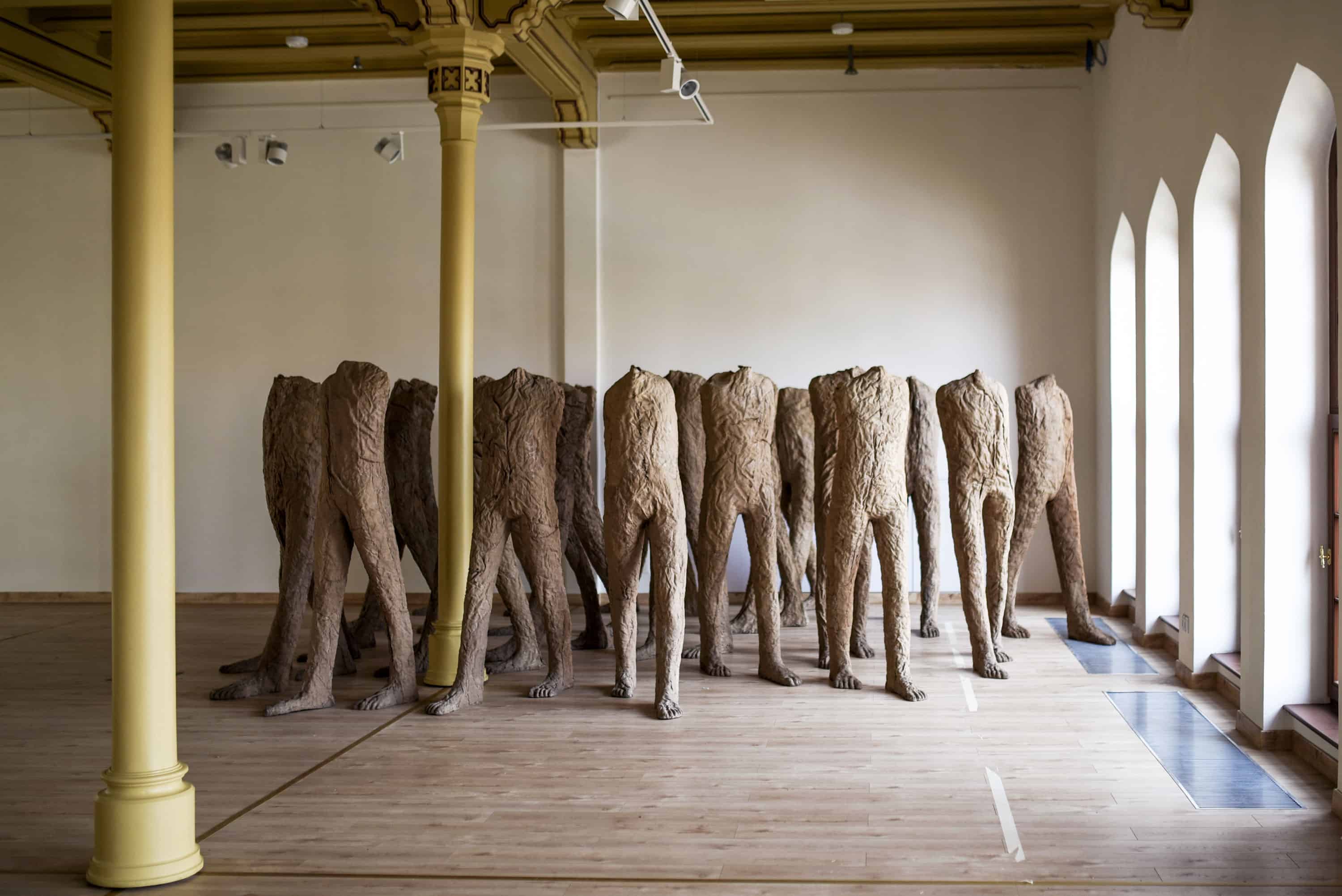
Magdalena Abakanowicz, ‘Walking Figures’, 2000, Burlap and resin, 21 figures approx. 168 x 51 x 36 cm, photo courtesy of the artist estate.
Young and disruptive:
1. Rafał Milach – an involved photographer
Until recently, Milach was associated mainly with the Sputnik Photos Collective portraying the mood in the post-Soviet states. The year 2018 marked a profound shift in his career. Early on, Milach was awarded the prestigious Deutsche Börse Photography Foundation Prize (2018) for his solo show “Refusal” staged in the Atlas Sztuki in Łódź (2017). Since 1999, Frankfurt-based Deutsche Börse Group has been compiling its international art collection of over 120 works of contemporary photography, supporting young and talented photographers by co-organising their exhibitions. Other award winners include such renowned artists as Paul Graham, Adam Broomberg & Oliver Chanarin. The distinction allowed Milach to open his first exhibit in the Photographer’s Galley in London.
Wait, there’s more! Currently, Rafał Milach is the only Polish photographer ever to join Magnum Photos. Additionally, his politically-charged photobook entitled “Nearly Every Rose on the Barriers in Front of the Parliament” was published in autumn by the Jednostka Gallery he’s currently represented by. The album was unveiled during Unseen, the photography fair organised in Amsterdam. Some of the photographs had their premiere in the October issue of Contemporary Lynx Magazine that included a special insert devoted to the project.
Alongside Karolina Gembara, Milach made an artistic statement on the exhibit “Geometry of Imagination” at the Mai Mano House in Budapest. A group show dealing with social upheaval and protest that opened in the European capital, where Orbán has seized control over every single institution of culture, carried powerful political implications. Rafał Milach’s sense of artistry and civic duty is the driving force behind his engagement and documentation of the protests which erupted on the streets of Warsaw. The artist was also nominated for this year’s Paszport Polityki (an award handed out by the weekly magazine “Polityka” – ed.). We keep our fingers crossed!
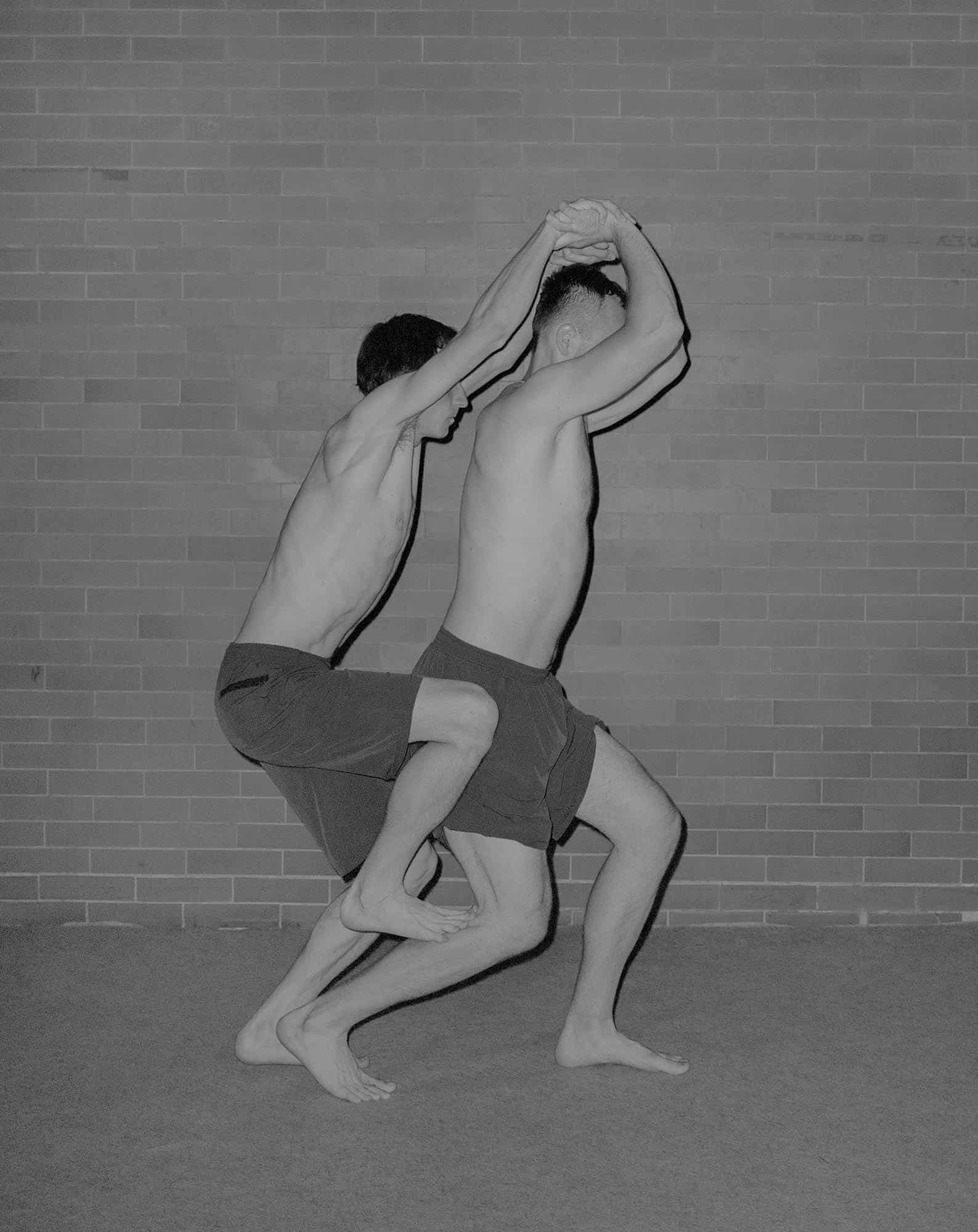
Rafał Milach, “Forming”, (c) 2018
2. Joanna Piotrowska has more to offer than “Frowst”
Joanna Piotrowska keeps travelling back and forth between Warsaw and London, where she teaches at the University of Arts. The pinnacle of her artistic career was “Frowst” – a photobook issued by MACK Publishing Press. This year, two works from this series were acquired by MoMA. The pieces she presented during a number of art fairs and international exhibitions are always outstanding. Her winning streak started back in New York. Piotrowska’s works were displayed on the exhibition “Being: new photography 2018” that addressed the issues of representation, a person’s identity, origins and mentality. Furthermore, “Frantic” and “Self-defense” more recent art projects of hers, saw the light of day on her momentous solo show in Mexico City. The exhibition was a part of the project CONDO, where Dawid Radziszewski and Madragoa Gallery were hosted by Arredondo \ Arozarena. As far as “Frowst” is concerned, the black and white photographs from the series were showcased on the exhibition “We don’t need another hero” orchestrated within the framework of the 10th Berlin Biennale. Besides, Dawid Radziszewski presented her works during LISTE – Art Fair Basel in 2016 and Art Basel Statements 2017 among top selected solo projects by emerging artists.

Joanna Piotrowska, I Frowst, 2013–14, courtesy Joanna Piotrowska; Galeria Dawid Radziszewski, Warsaw; Madragoa, Lisbon; Southard Reid, London
3. Alicja Kwade always delivers
Recently, I visited the Museum of Contemporary Sculpture to see “Artistry” – a group show dedicated to the post-war Polish sculpture. Alicja Kwade’s incredibly evocative piece placed at the center stood out among the rest. I was taken aback by my art world friends asking “Who is this artist, anyway?” Be that as it may, some artists are completely ignored on their home territory despite a well-established international status. After she unveiled her monumental art installation at the previous edition of Venice Biennale, Alicja Kwade keeps the momentum going. Her works are often presented on the international art fairs since she’s represented by the 303 Gallery. In 2018, Kwade participated in the remarkable exhibit “Space Shifters” held at the Hayward Gallery in London, which included disorienting sculptures and installations throwing the viewers off balance. More importantly, she opened three solo shows in the European art capitals, namely Zurich, Berlin and Copenhagen. In “Out of Ousia” for instance, Alicja Kwade created a staggering sculptural environment composed of a double mirror and giant rocks. A surreal space, which defied the laws of physics, embodied such notions as time, space and movement. Until May 2019, you can also visit and immerse yourself in “TunnelTeller” – a site-specific art installation for The Trustees’ Castle Hill on the Crane Estate, Ipswich in the UK.
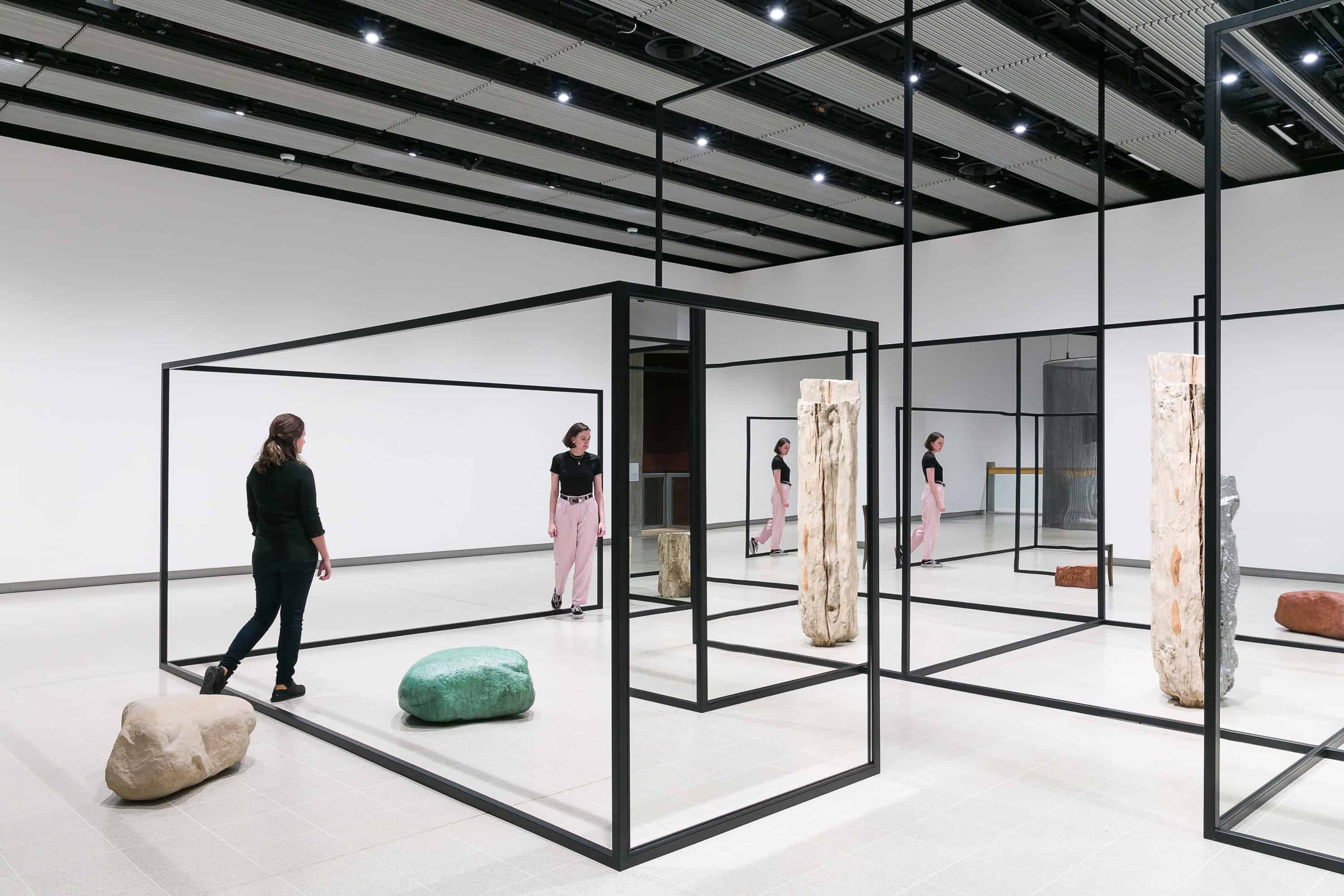
Installation view of Alicja Kwade, WeltenLinie, 2017 at Space Shifters, © copyright the artist, courtesy Hayward Gallery 2018. photo Mark Blower
4. Agnieszka Polska conquers Berlin
Agnieszka Polska has recently been awarded the prestigious Preis der Nationalgalerie, which launched in the year 2000. Every two years, this honour is bestowed upon the artist under the age of forty who lives and works in Berlin. Instead of a financial prize, the winners receive an official invitation to exhibit their works in the Museum für Gegenwart Hamburger Bahnhof. Agnieszka Polska had something special in store for this occasion. “The Demon’s Brain” is a four-channel installation that combines videoart and animation to tell a story of a messenger’s encounter with a demon that spouts off about the problems faced by the world in the future. The viewers realize soon enough that the discussed issues plague the current reality of globalized economy and politics. Furthermore, her works were displayed on a group show “Low Form. Imaginaries and Visions in the Age of Artificial Intelligence” held in MAXXI, Rome. The works of some of the most visionary artists of their generation were placed side by side by the curator and director of this eminent cultural institution. The pieces by Agnieszka Polska were also included in the joint exhibits in Zagreb and Bad Muskau, Germany.
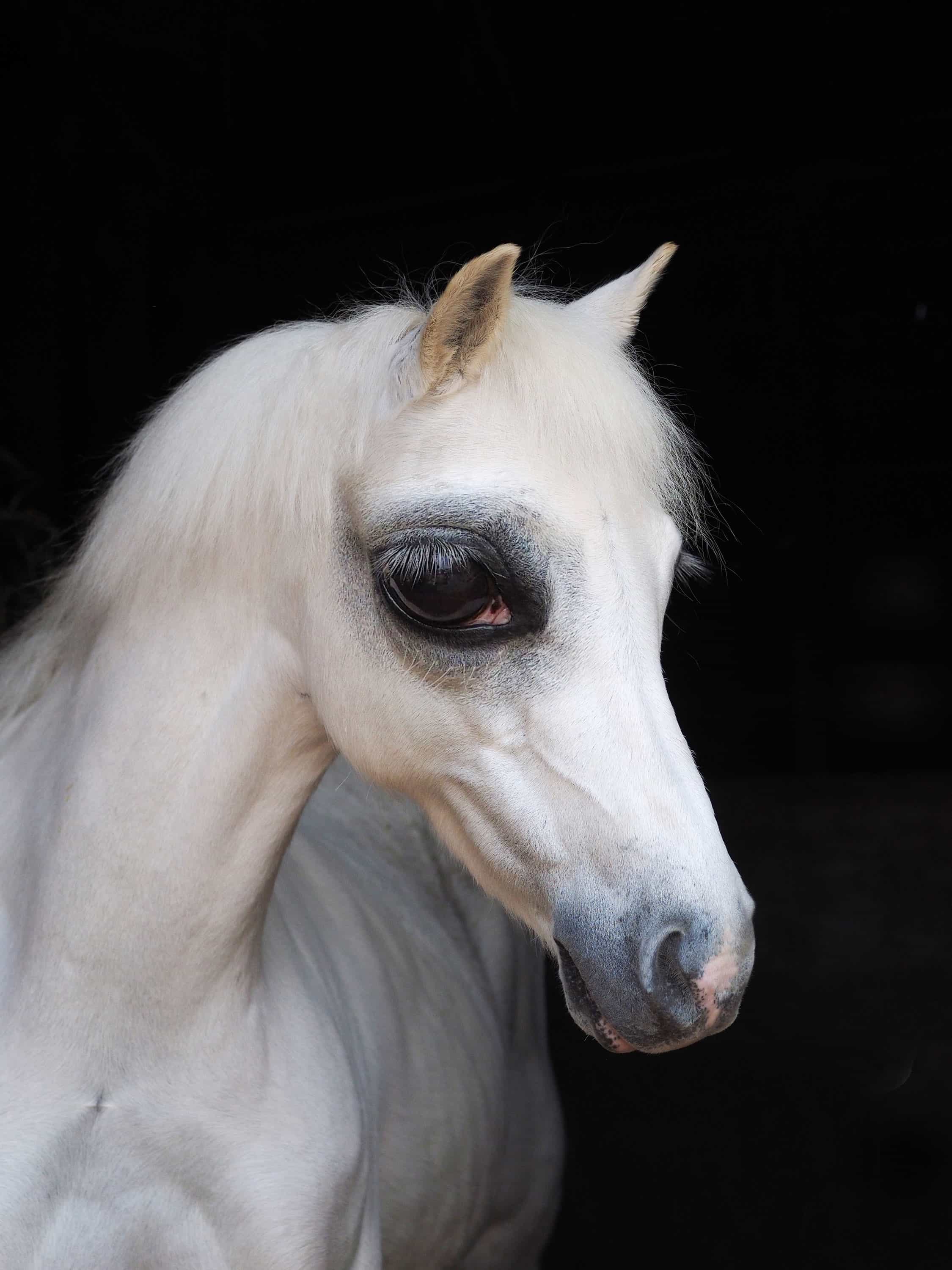
Agnieszka Polska, The Demon’s Brain, 2018 © Agnieszka Polska, courtesy ŻAK BRANICKA, Berlin and OVERDUIN & CO., LA
5. Aneta Grzeszykowska in New York
Another young-generation Polish artist and photographer, whose presence was clearly palpable on the international art scene, was Aneta Grzeszykowska. This year, two deeply disturbing series of photographs – “Mum” and “Beauty Mask” – were presented on her outstanding exhibit in the Lyles & King, New York. Additionally, Grzeszykowska participated in two major group shows: “Family Values: Polish Photography Now” in London-based Calvert 22, which Roma Piotrowska broadcasted for us on her blog, and the exhibit of Polish artists whose works were placed in Art Telekom Collection, organised by the Museum of Contemporary Art in Zagreb. What is more, “Extreme.Self” show in Kunstforum der TU Darmstadt featured Grzeszykowska’s works alongside such artists as Laís Pontes and Isabelle Wenzel. She also attended Riga Photography Biennale.

Aneta Grzeszykowska, Beauty Mask #2, 2017, pigment ink on cotton paper, courtesy of Lyles & King Gallery







